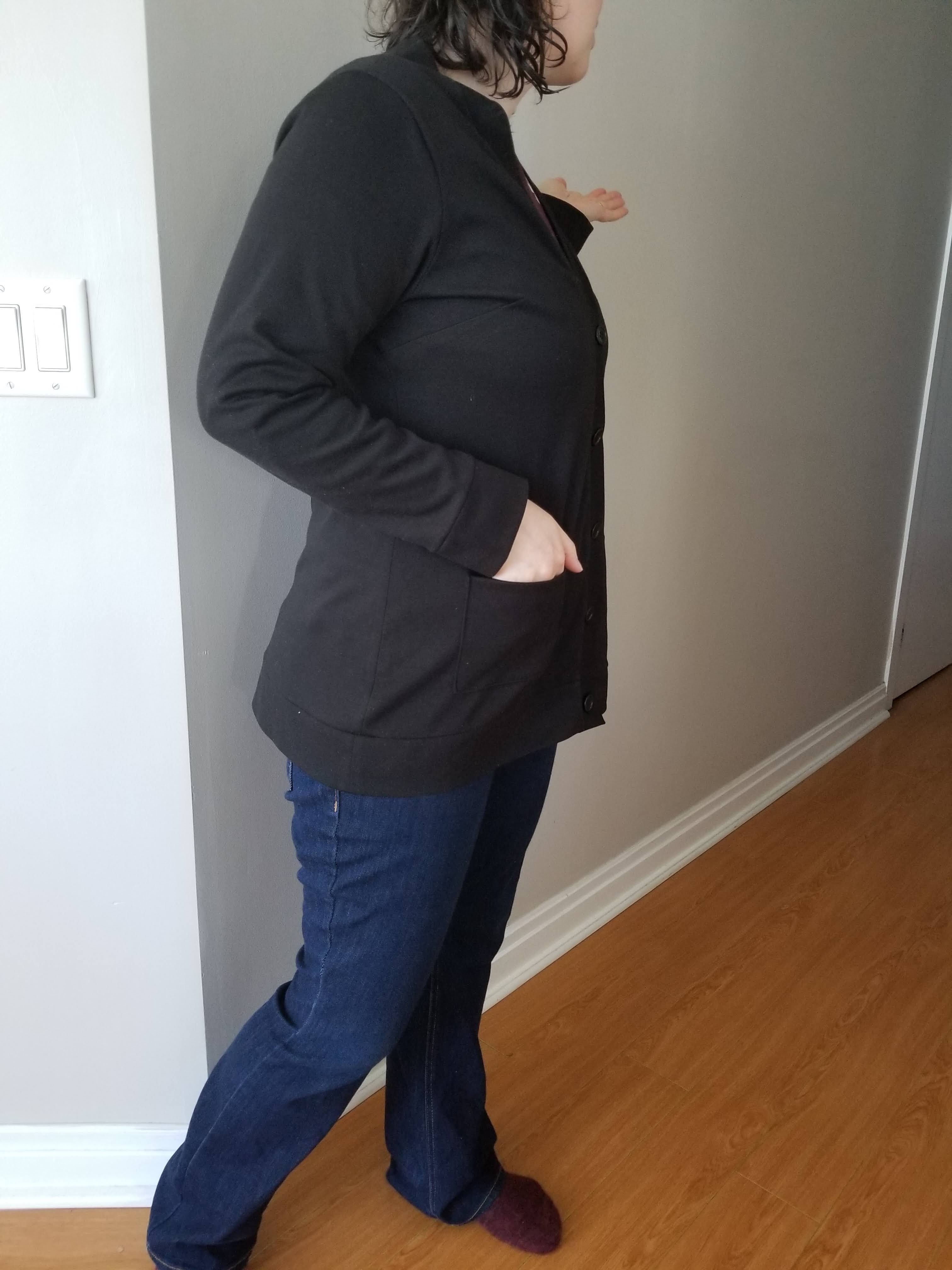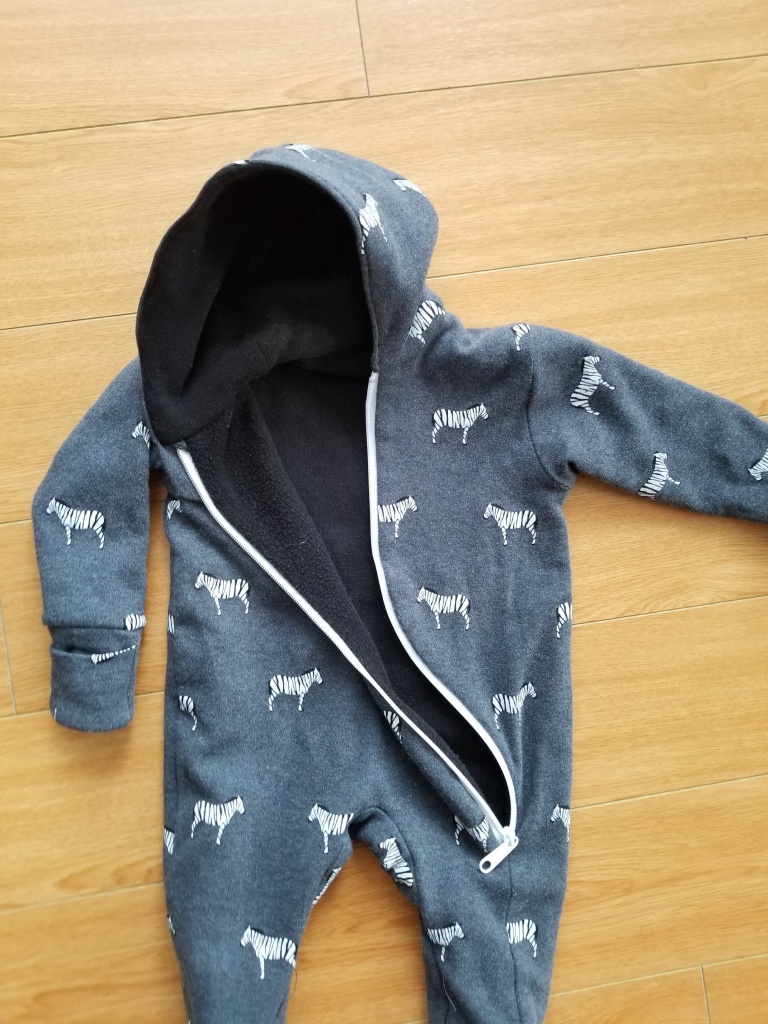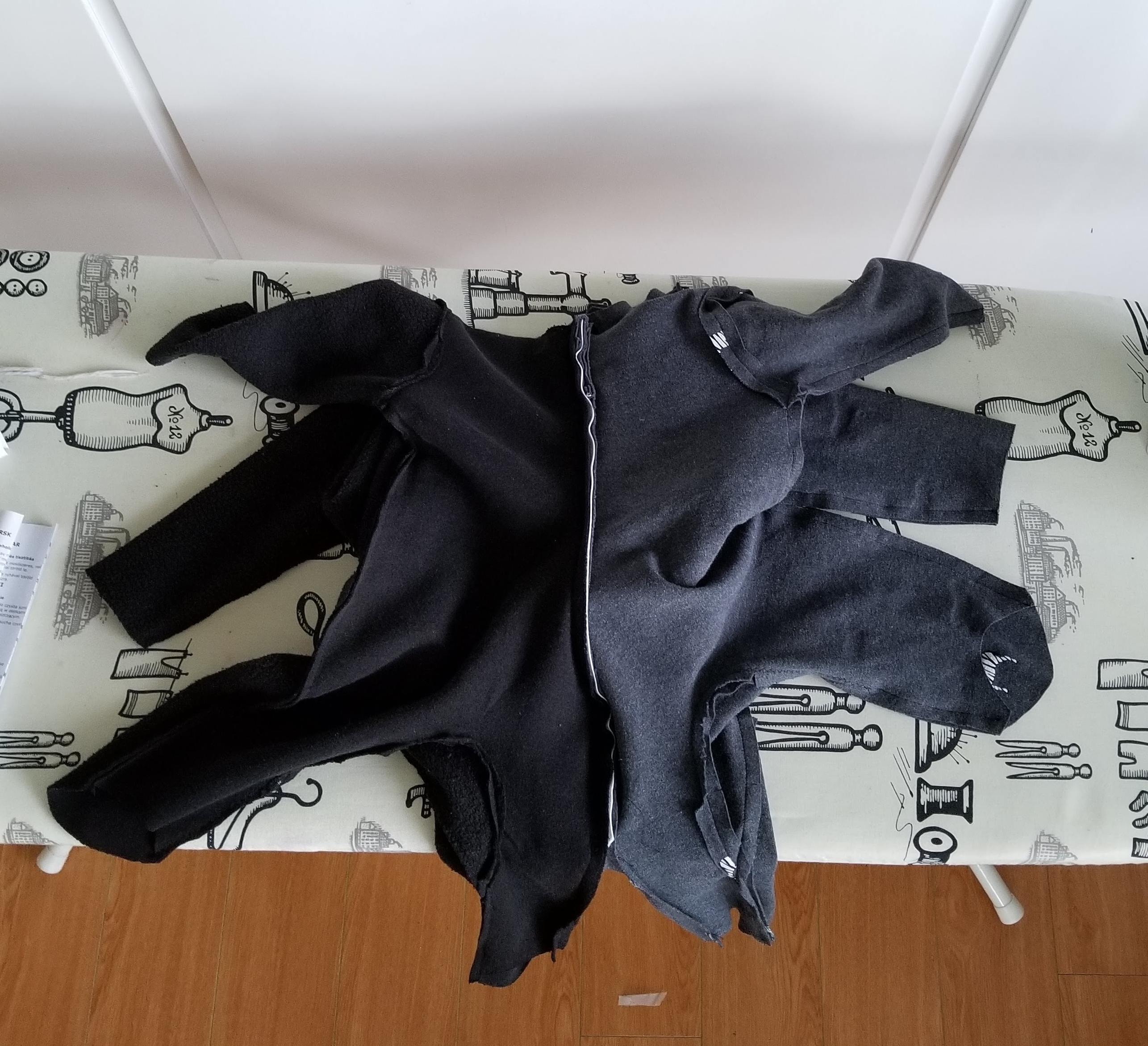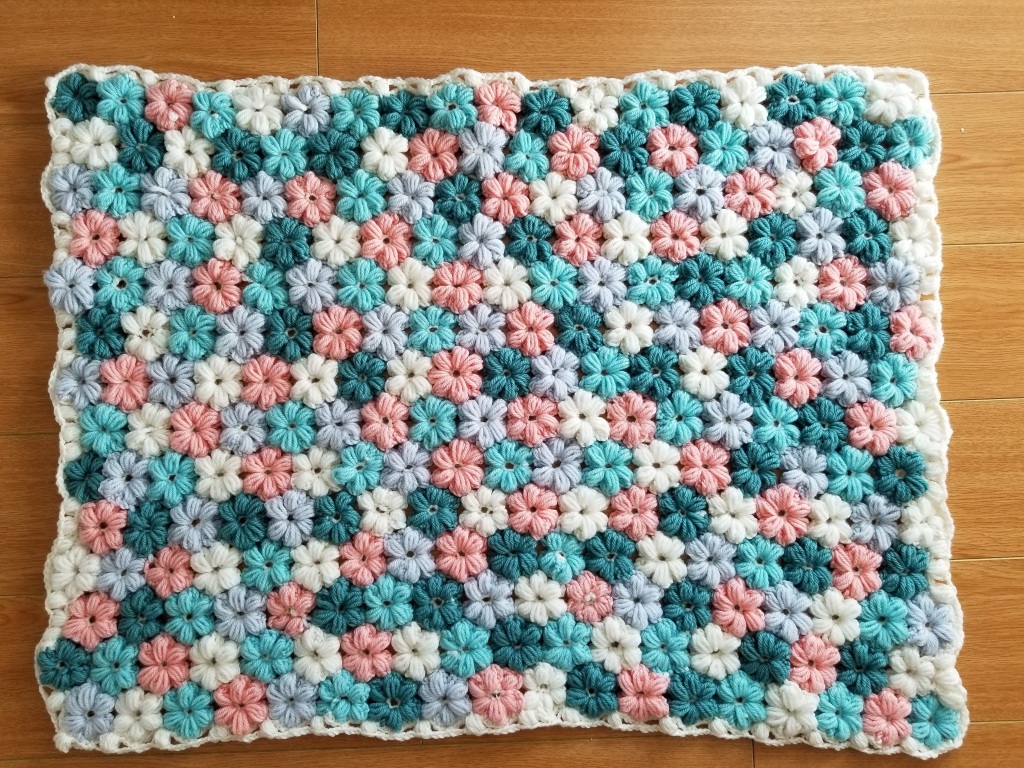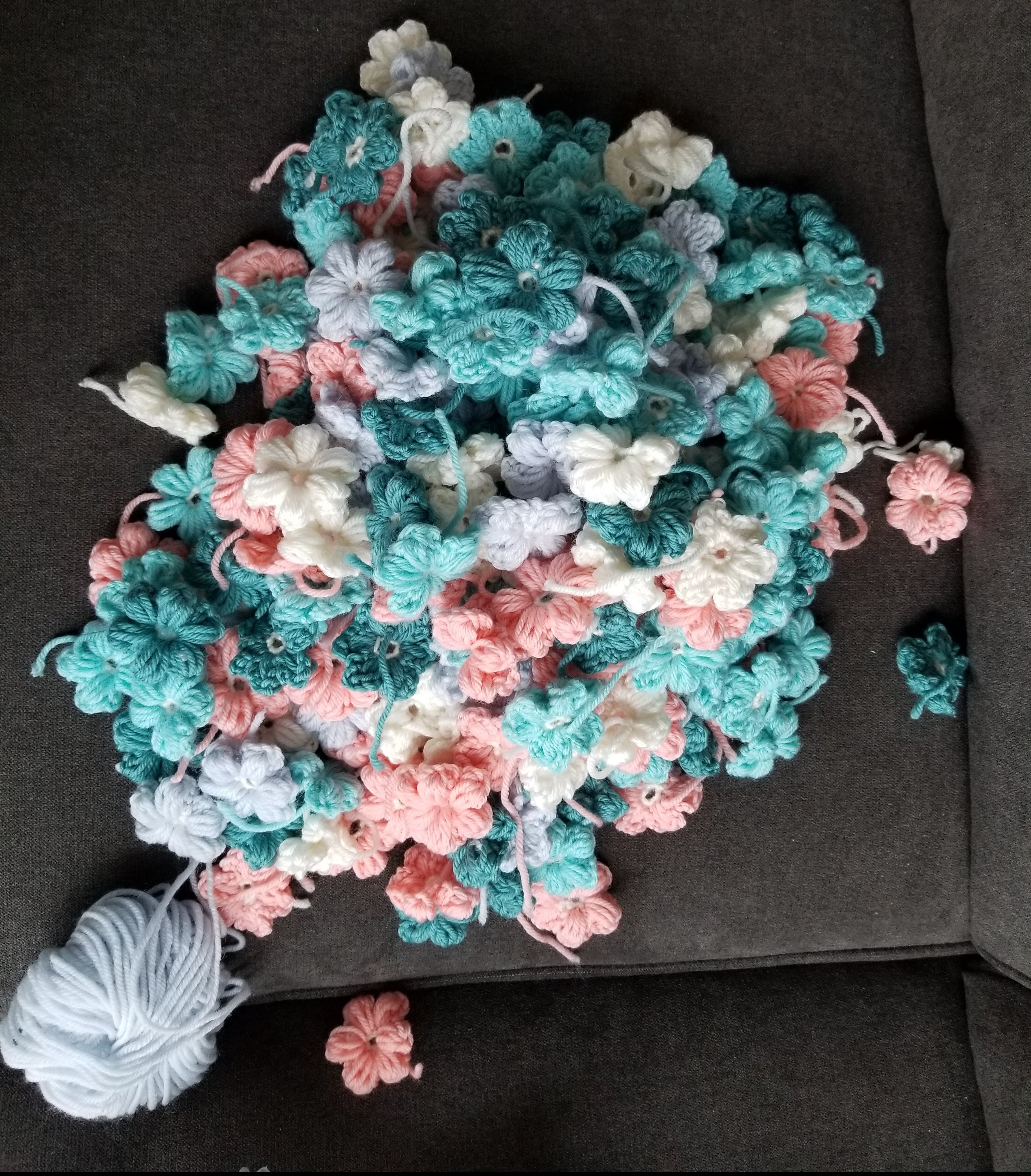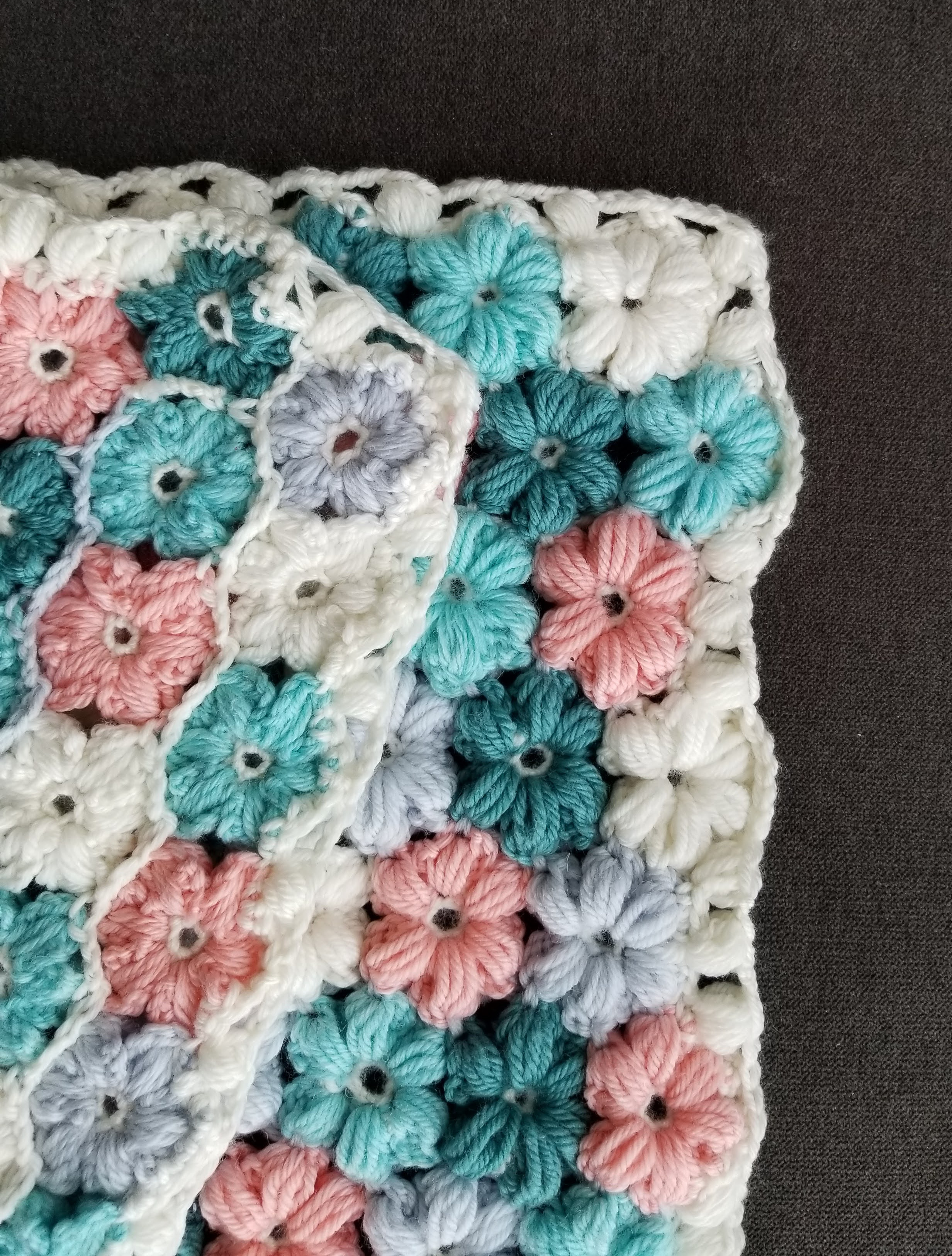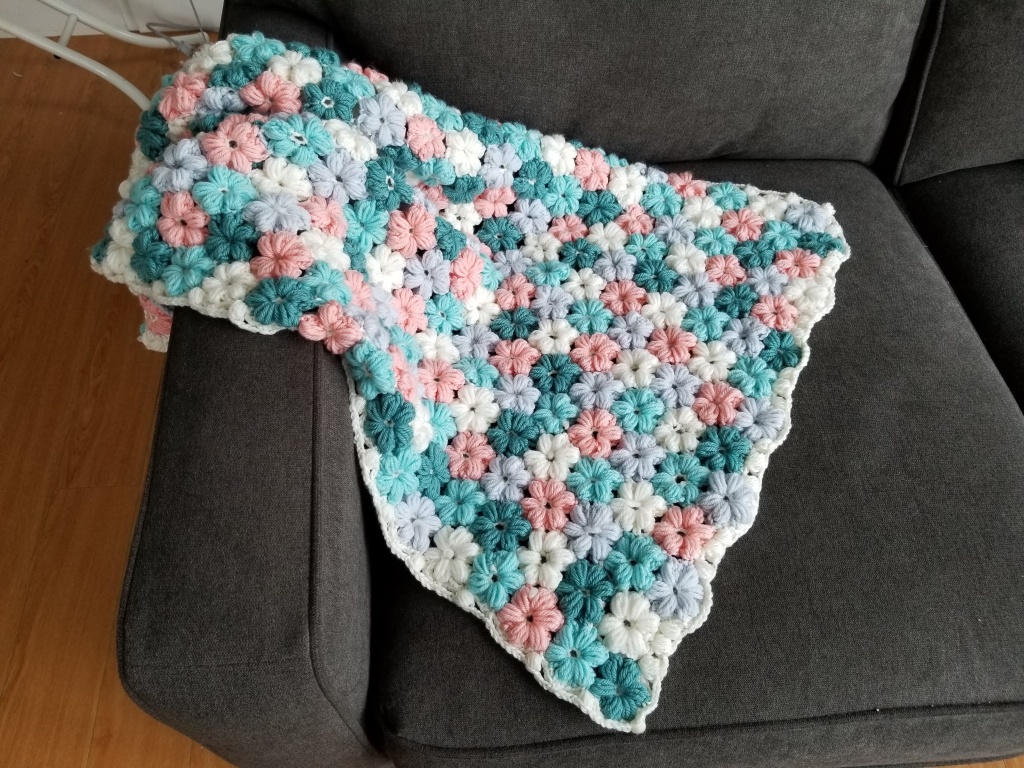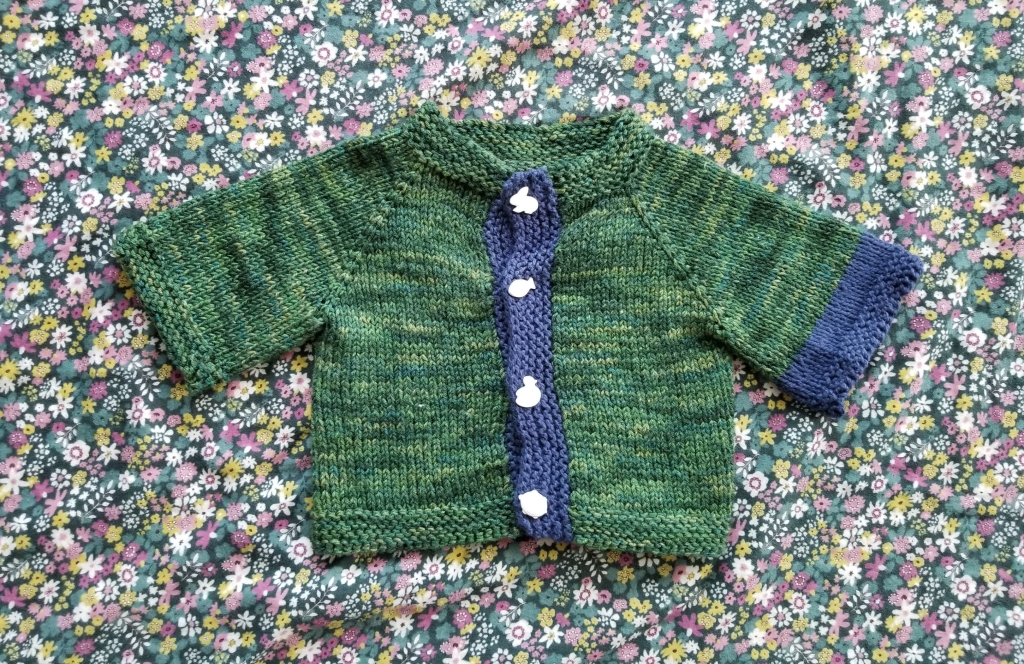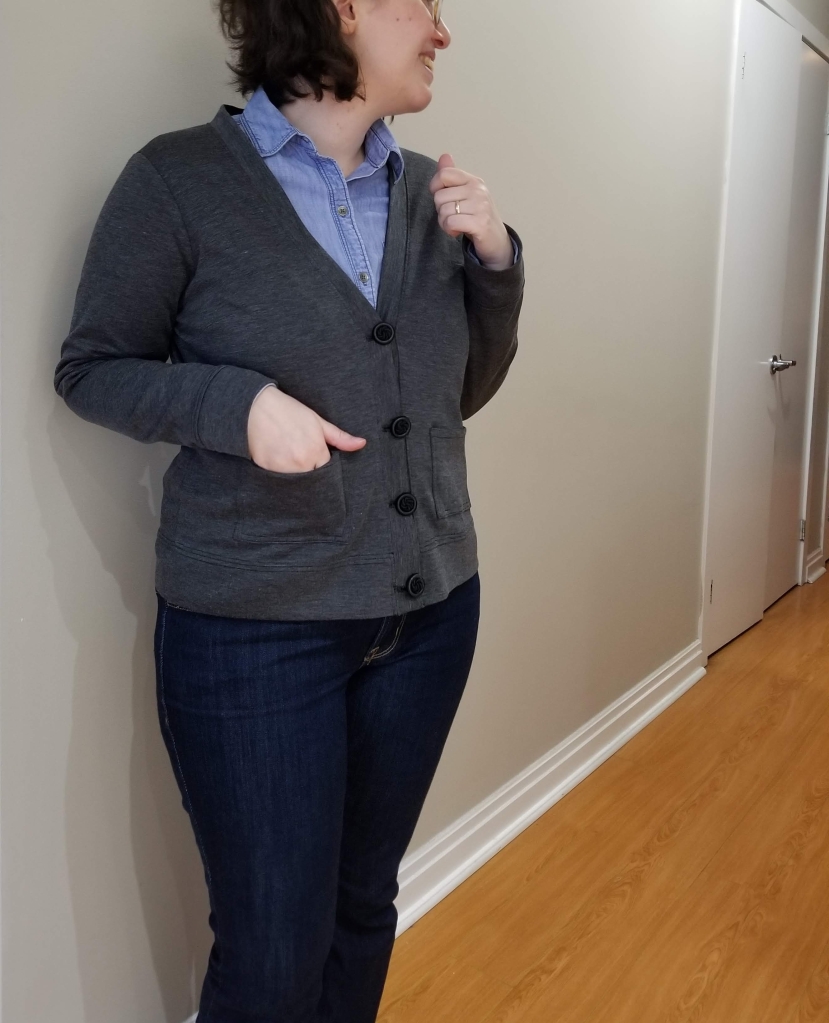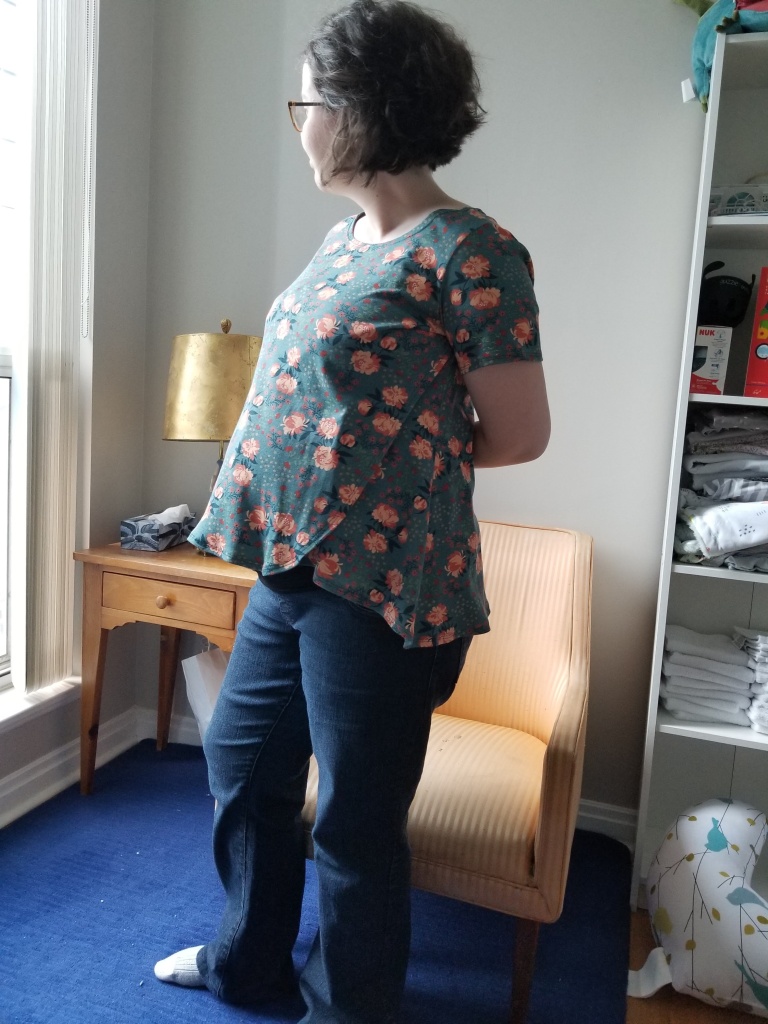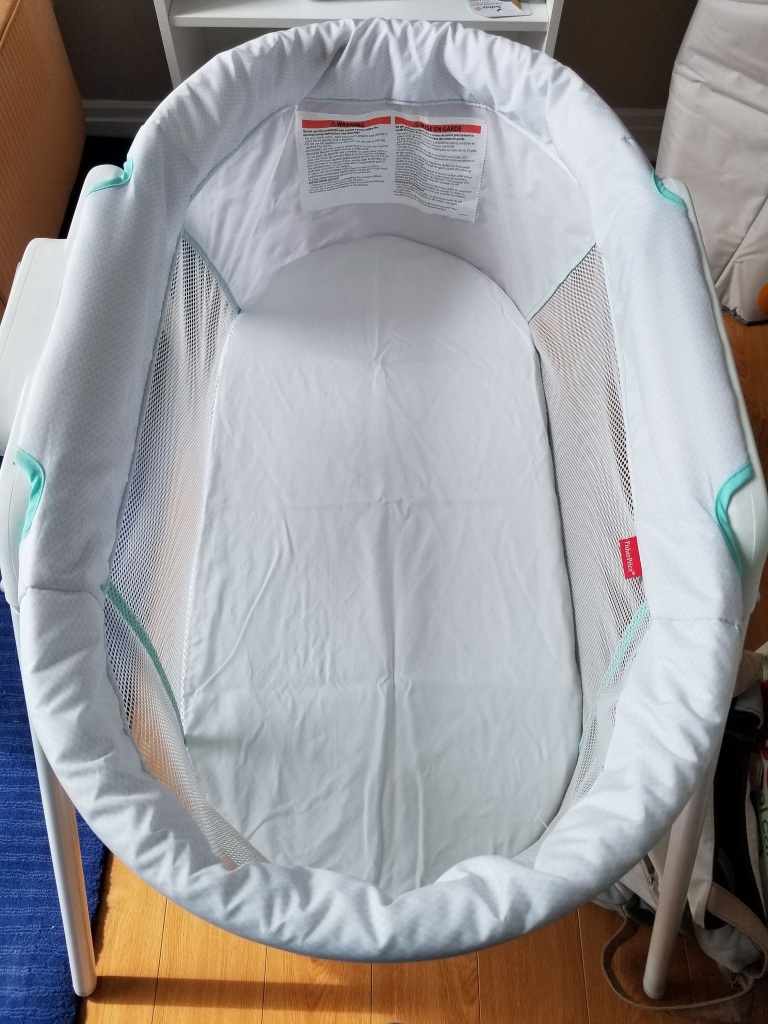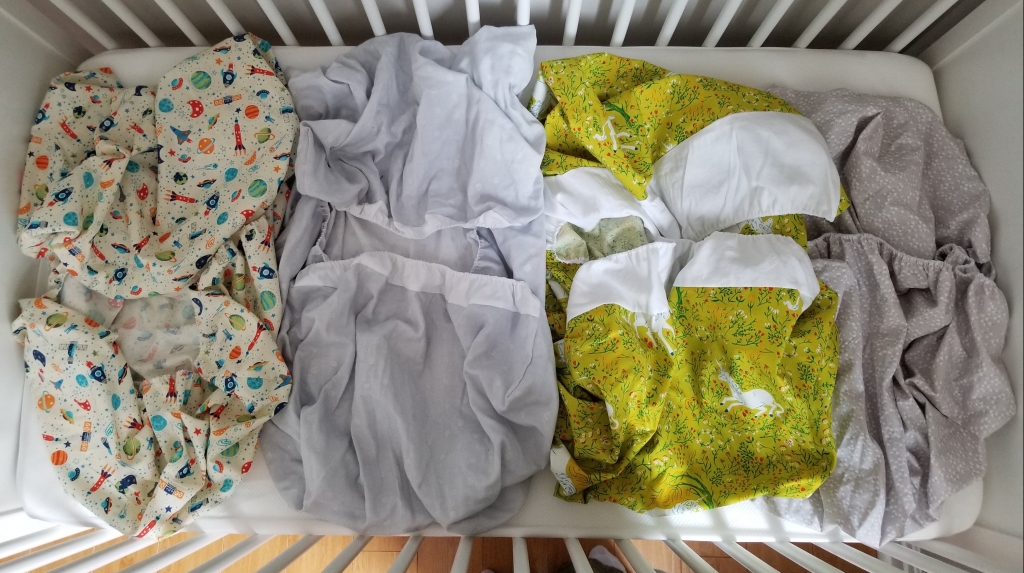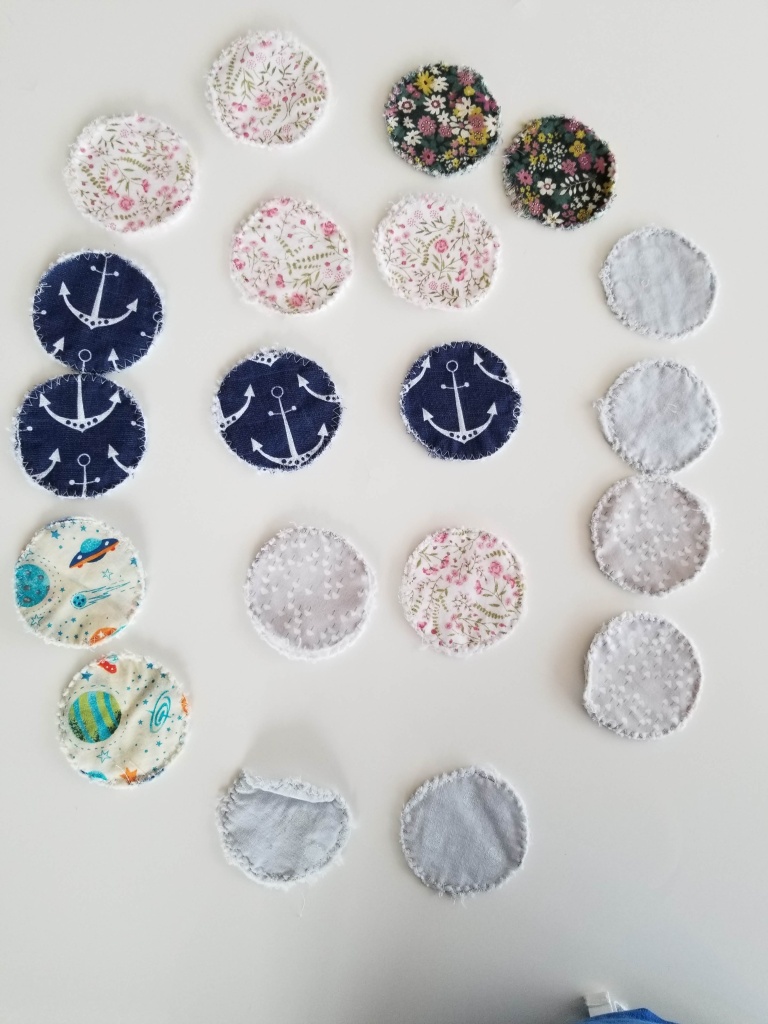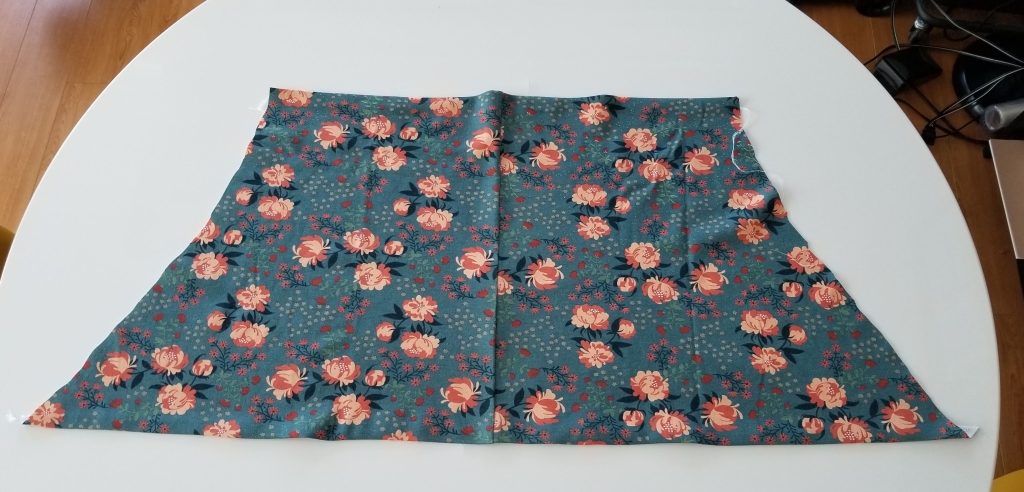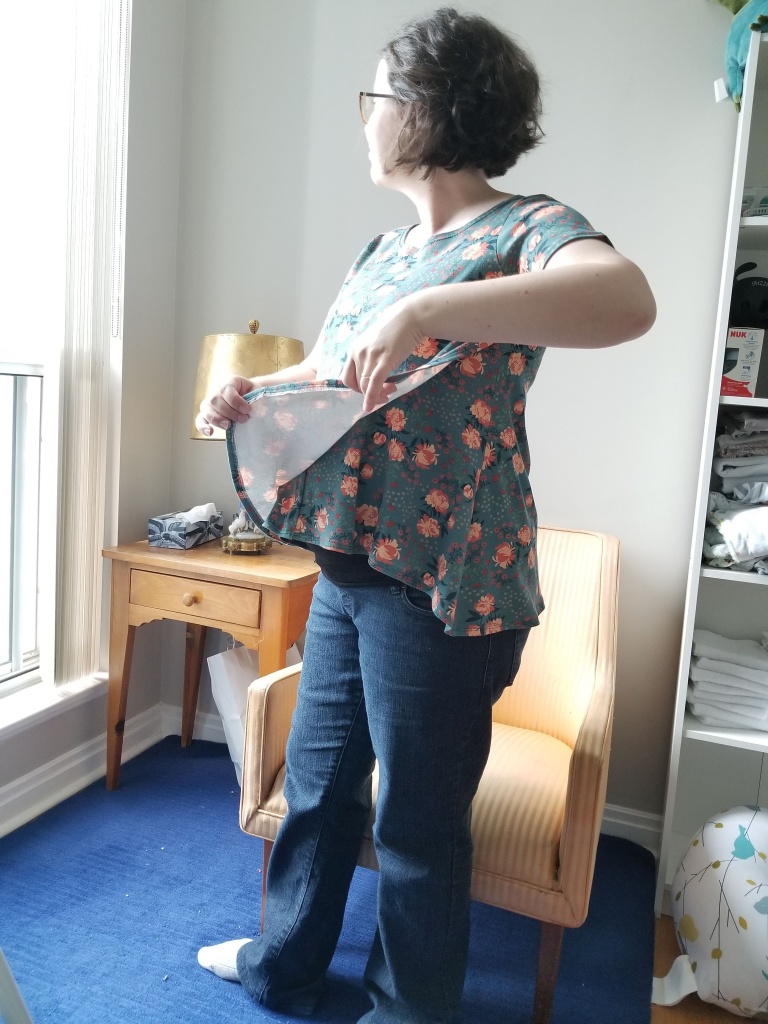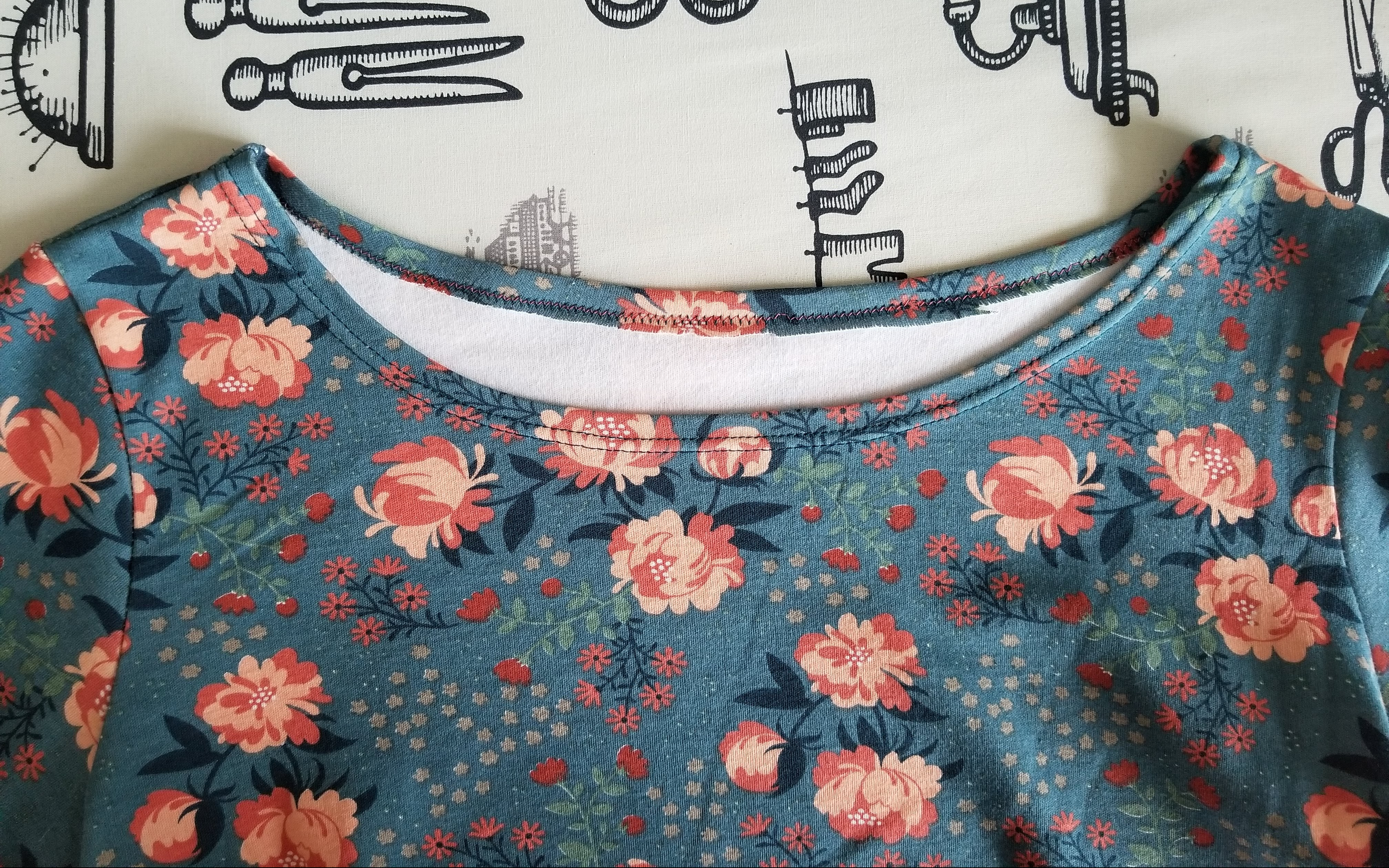The swans are in the lake and the daffodils are blooming; I have finished a pair of warm, double-layered, felted wool mittens. Not quite impeccable timing, even though I like the mittens themselves very much!
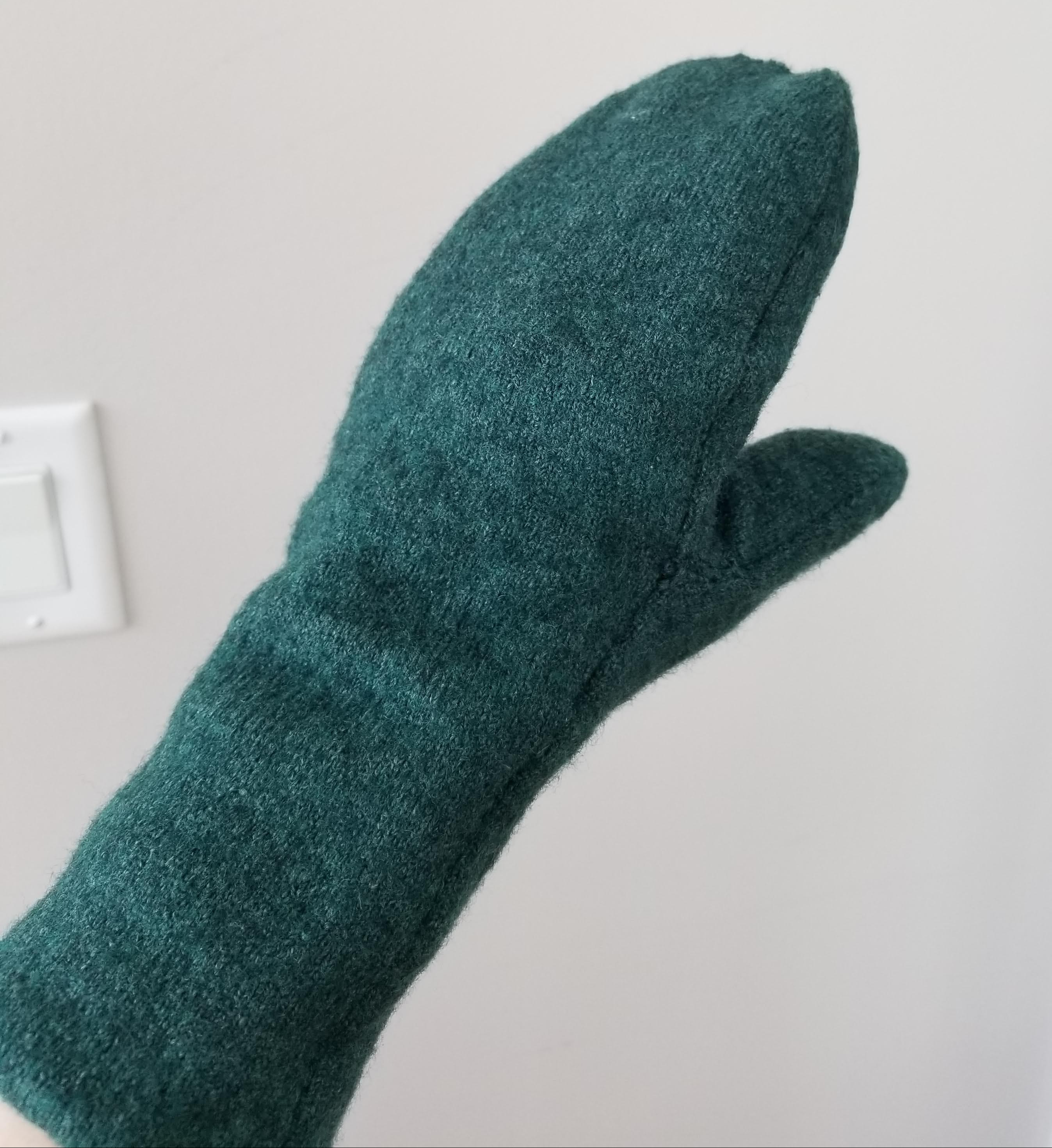
In my defense, I did start them in the winter, but I think that my baby precociously developed an understanding of irony; she started sleeping through the night the evening before my return to work. The Venn diagram of, “Time” and, “Energy” is most often two circles so far apart that you could practically lie down between them.

Anyway, the “make winter accessories out of old sweaters” trend has been around as long as the internet, but I never had a sweater I really wanted to use that way. However, I did have two pieces of wool knit in my scrap bag: a pink cashmere shirt and a piece of a green wool/silk skirt. I felted both by running them through a hot wash and dry twice, and figured that I’d make luxurious double-layered mittens.

All I did needed to do was make two pairs of mittens, slip one inside the other, and hem. Easy, right?
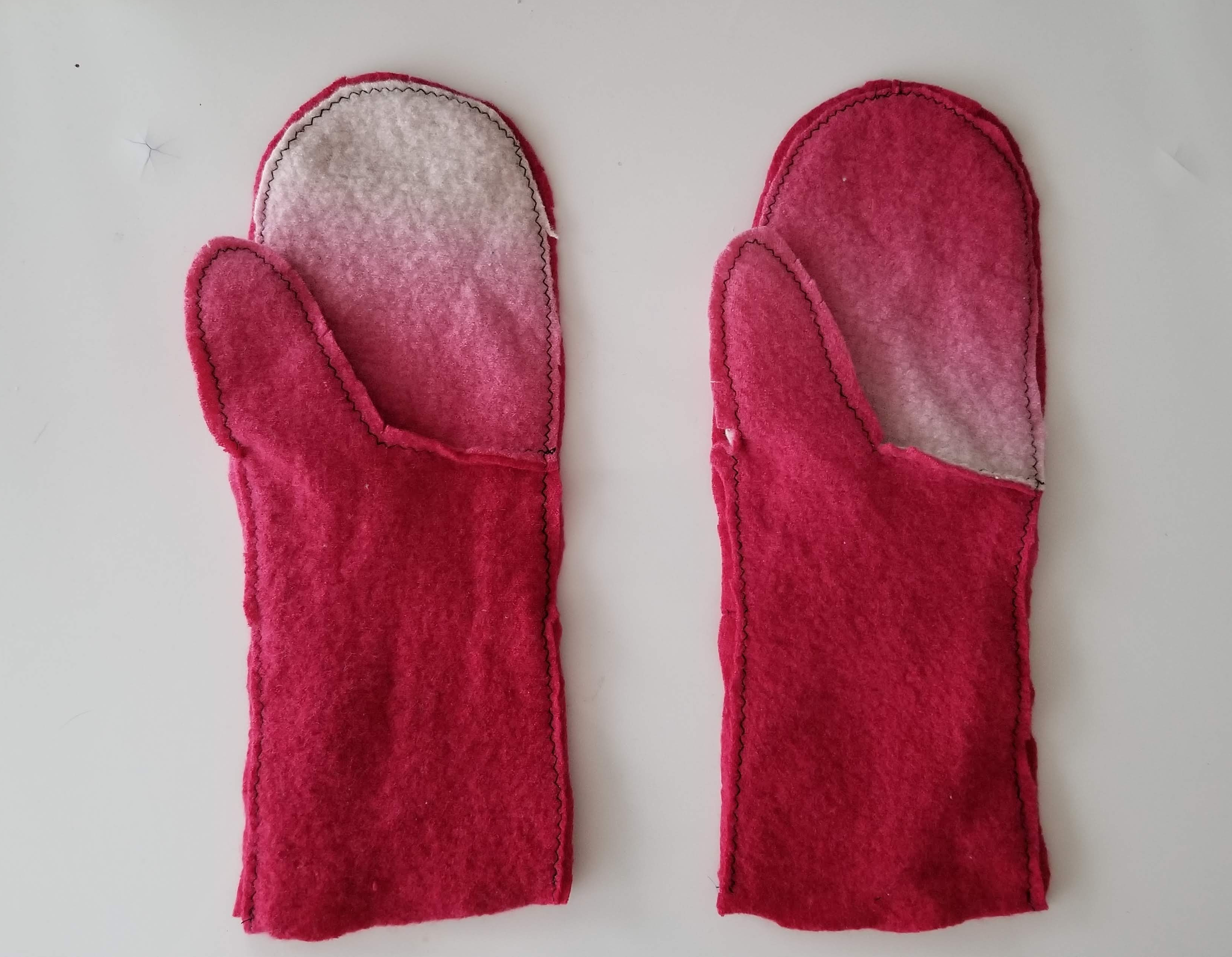
Sigh. So, then, I unpicked one pink mitten to make a right and a left.
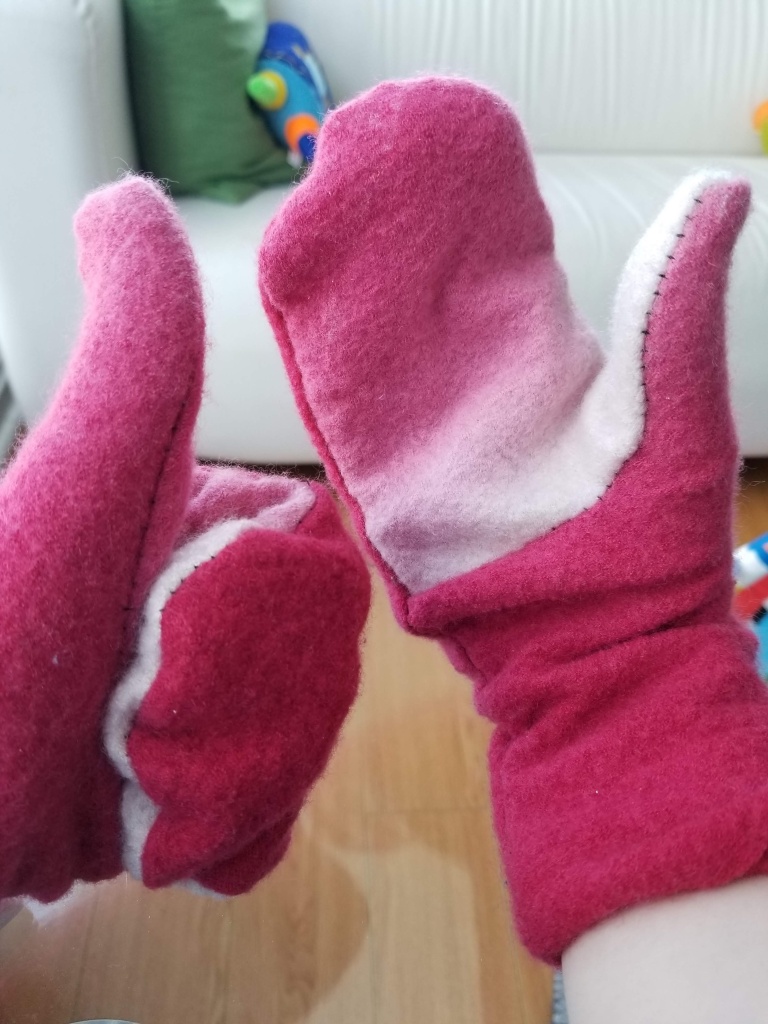
For the green outer mittens, I used a smaller seam allowance to make them ever-so-slightly bigger than the pink ones. It helps them lie together without wrinkling, which is more comfortable.

Then, I tucked the pink set inside the green set, folded the green hem over the pink, and whip-stitched it down.
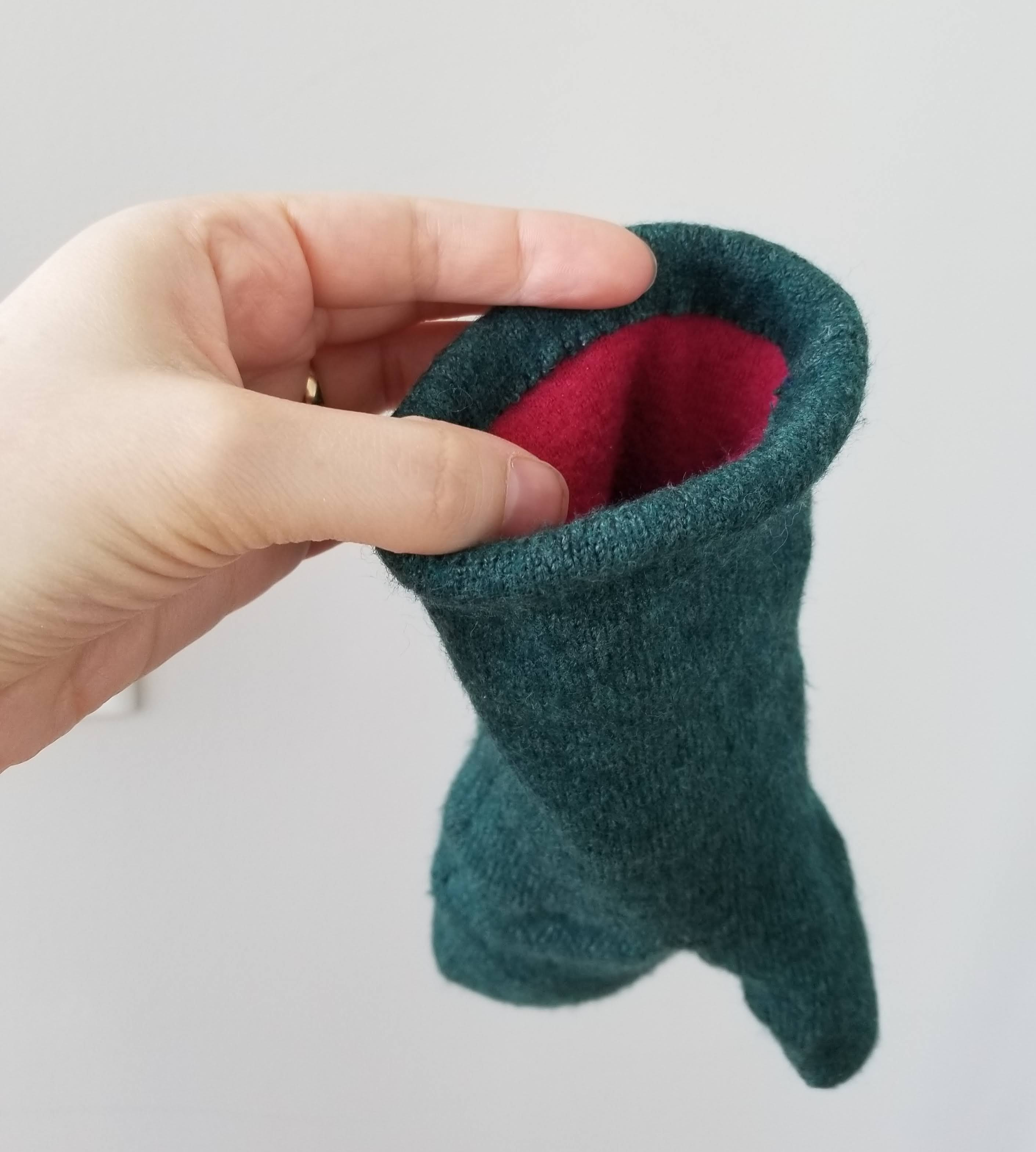
And that’s it: beautiful, warm mittens. They feel downright luxurious! I could get used to cashmere. I like the shape of them, too; because the thumb protrudes from the front instead of the side, the mittens don’t twist around my hands. They tend to slide down my wrists because there isn’t any elastic or ribbing to hold them up, but overall they’re great.
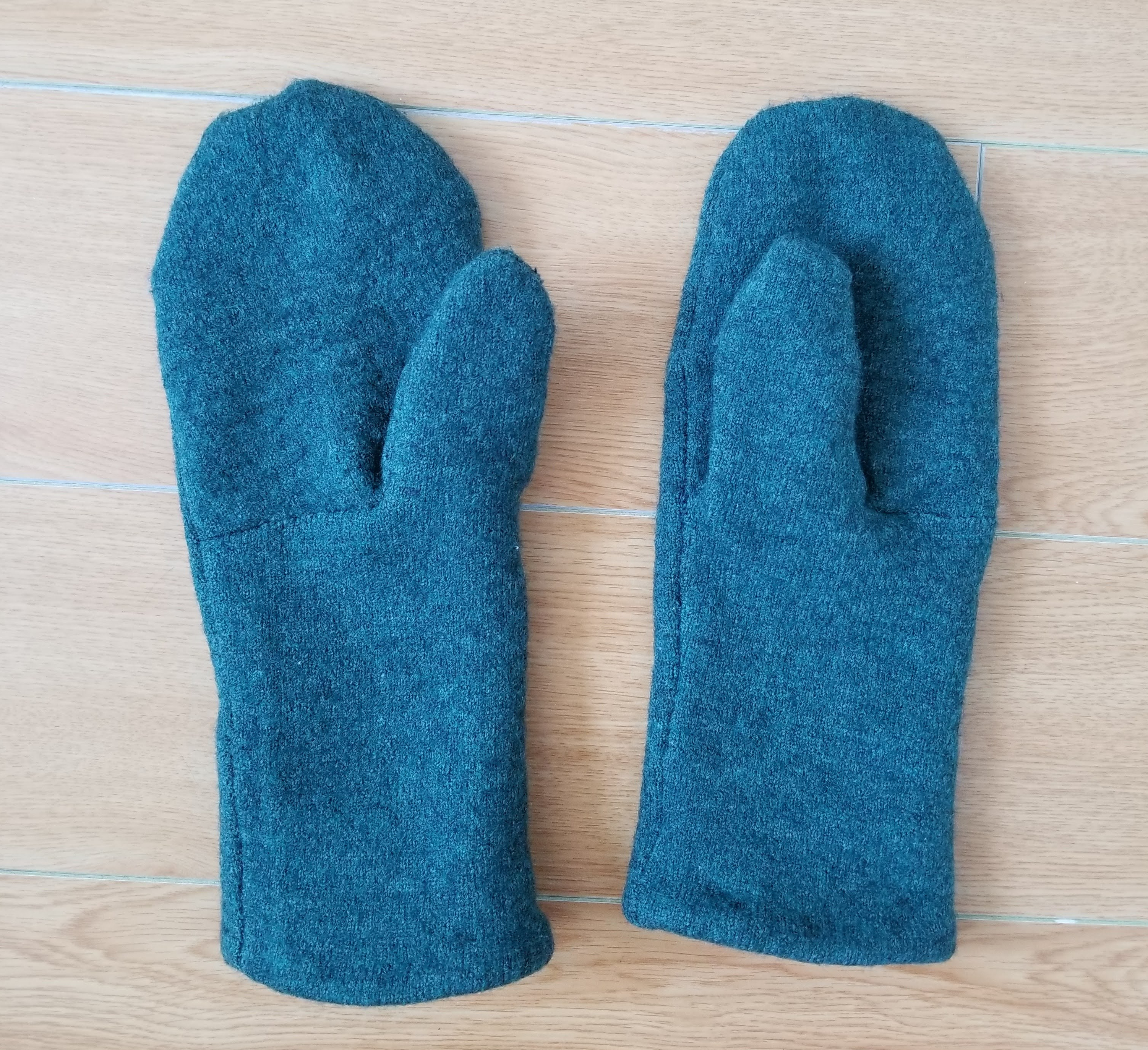
In Conclusion:
Materials: Two pieces of felted knits from hand-me-down garments.
Pattern: Simple Felted Wool Mittens, free from Purl Soho. I messed up the printer setting and they’re about 12% smaller than they should be, but I have small hands so it worked out.
Cost: I’m calling this a freebie.
Final Thoughts: These are so cozy! The cashmere is incredibly smooth and soft but I dislike the colour; using as a lining is a perfect solution. They’re warm, soft, pretty, and easy to make (even if it did take me three months.)

